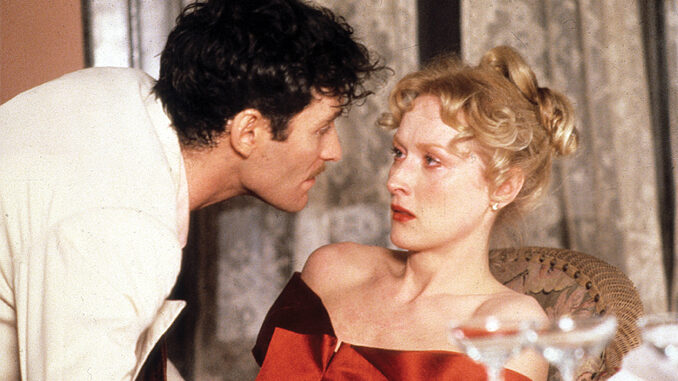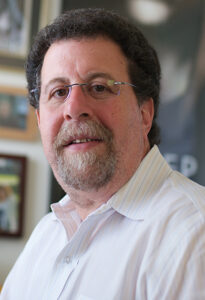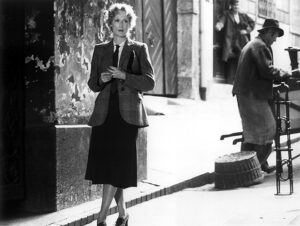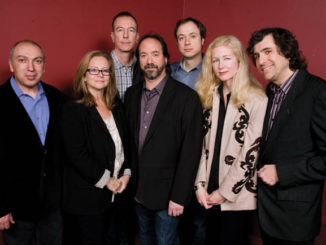
by Peter Tonguette
In a career spanning nearly 45 years, supervising sound editor Anthony J. “Chic” Ciccolini III has worn many hats.
He has been a frequent collaborator to directors as diverse as Ron Howard, Jim Jarmusch and David Mamet. On five occasions, he has been among the nominees for the Motion Picture Sound Editors Golden Reel Award. His tasks have included re-creating the sounds of both a small town in the South (1991’s The Man in the Moon) and a brutal boxing ring (2005’s Cinderella Man).
But in the summer of 1979, Ciccolini was simply a reader — one among many. Like thousands of others that literary season, he picked up a copy of Sophie’s Choice, the new novel from Pulitzer Prize- winning author William Styron. “I read the book,” he says, “and I was totally moved by the story.”
The plot is devastating in its details: In 1947, an unworldly young man named Stingo pulls up stakes from Virginia to Brooklyn with the notion of establishing himself as a writer. Finding suitable lodging in a boarding house painted in pink (also known as the Pink Palace), he soon joins the circle of Sophie and Nathan, a romantic but inscrutable couple who are also residents. In time, a picture emerges, as Polish-born, Roman Catholic Sophiedescribes her experience during World War II. Although a survivor of the concentration camp in Auschwitz, her family — in the incomprehensible “choice” that gives rise to Styron’s title — was torn asunder. (She had been a wife and mother in Poland.)

In all likelihood, were it not for writer/director Alan J. Pakula, Ciccolini would have remained simply an admirer of Sophie’s Choice. But when the director — who counted among his credits such formidable films as Klute (1971), The Parallax View (1974) and All the President’s Men (1976) — took on Styron’s 500-plus-page novel, Ciccolini found himself in a position to help present Sophie’s story to movie audiences. In an Academy Award-winning performance, Meryl Streep played Sophie. Kevin Kline was Nathan and Peter MacNicol was Stingo.
Having already collaborated with him on the Wall Street-set thriller Rollover (1981), Pakula and picture editor Evan A. Lottman, ACE, invited Ciccolini to serve as the supervising sound editor on Sophie’s Choice (1982). “I had an editor who believed in me, and I also had a director who believed in me,” says Ciccolini, who had been working in both picture and sound editing for about a decade. Neither of which made the task any easier.
“When Alan was putting the film together, he had a really heavy-duty job,” Ciccolini remembers. “He adapted the book to fit the screen, and on top of that, he had to go even further and dig out the things that were considered essential for the movie and take away the things that were slowing it down.”
Even with Pakula’s attempts at paring, however, the film initially ran four hours and 45 minutes. “And it was tight then,” Ciccolini says. “When he cuts, Evan lets the scenes do their thing. And, from my perspective, it’s like, ‘How do you begin to nip and tuck?’”
In fact, the story lent itself to excesses in length. In scenes marked by a quiet intensity, Sophie imparts events from her life to Stingo. “She slowly opens the doors to the different things that are going on in her life and in her mind, and Alan didn’t want to push her along,” Ciccolini comments. “He didn’t want to hurry her up, because the character was just so incredible.” Threaded throughout are flashbacks that make the printed word visual, as we see Sophie in Auschwitz, as well as her early days in America.
Pakula and Lottman would eventually trim the film by over two hours, but Ciccolini recognized that its tone was unlikely to change; thus, he was reluctant to introduce sound elements that would distract. “This is a dialogue-oriented film; a lot of storytelling and flashbacks and reminiscing,” he says. “There wasn’t a lot of room for sound that could possibly interrupt and interfere with what was going on emotionally in the film.”
Consequently, the sound editor looked for subtler ways to embellish the film’s soundscape.
For example, he suggested discreetly adding background noises to the scenes set in
the Pink Palace — people yelling and phonographs playing. After production wrapped, special recording sessions were held in the Brooklyn house that had originally stood in for exteriors of the Pink Palace.
“We had the actors doing shout-outs and doing conversation that we were able to then sprinkle into the film to kind of make it alive, to give it the sense that this is not a set, that there’s really things going on,” Ciccolini recalls. “I wound up going even further than that by getting a couple of Brooklyn women with real thick accents shouting out into the street calling their kids, and then hiring kids to give their moms a hard time, saying, ‘I don’t want to go home yet!’”

To add authenticity to the sounds of neighborhood children jumping rope or playing hopscotch, Ciccolini looked up which nursery rhymes would have been popular in Brooklyn in 1947. “We sprinkled those things in, especially before Sophie and Stingo are talking and she’s reminiscing,” he says. “And some of the things that trigger her memory are these sounds that we spotted in, and then we’d also put in additional sounds to bring
her out of it.”
In one powerful scene, the camera of cinematographer Nestor Almendros, ASC, dollies in on Sophie as she sits, opposite Stingo, beside the windows in her room. She is preparing to discuss her father — including his virulent anti-Semitism — as the bells of a Good Humor ice cream truck draw her eyes outside. The row of children congregating around the truck can be discerned. After a few moments, as if cued by the sounds, the film switches to flashbacks of Poland.
“All of a sudden, you hear the sound of the bells of the ice cream truck, and then you hear these kids,” Ciccolini recounts. “We added enough reverb on it, so it helps bring this flashback into play.”
Over the course of the film, as the flashbacks progress to scenes of Sophie’s imprisonment in Auschwitz, what we hear is as horrific as what we see. “There’s a shot of the smoke stack, and we put in the sound of this low rumble, which was a furnace-type sound,” Ciccolini recalls. “It gave the indication what was going on: Extermination.”
In time, the film reaches its most devastating flashback; in a train yard in Auschwitz in the dead of night, the fates of Sophie’s two children are settled. The sound design contributes to the scene’s horror. “You didn’t see a lot of the things that made up the train yard,” Ciccolini says. “It was all sound that was put in, placed properly to give the audience the actual belief that they were outside of a concentration camp; you had the sound of train whistles, trains going, shuffling feet, a gun going off, a watchdog barking.”
Having read the novel, Ciccolini came to the project with clear ideas of what the characters would be and look like. “I didn’t picture Peter MacNicol as Stingo,” he says. “Peter was just kind of this slight person — especially when you’re seeing him with Sophie. She’s so dynamic and
he’s so meek.” But, as he spent time with the film, Ciccolini came around to the actor’s interpretation. “I can understand why she took a fancy to him and treated him as a confidante,” he says. “He was an innocent, he wasn’t judgmental, so in a way she was able to manipulate him to feel for her.”
But Ciccolini accepted Streep as Sophie almost instantly. “When I see her even in today’s movies, I still see a bit of Sophie,” he says. “She was Meryl Streep, but she was Sophie.”
The actress adroitly juggled English, Polish and German; in one scene, she tells Stingo that, during the war, she bought meat on the black market for her tuberculosis-afflicted mother. When Ciccolini and re-recording mixer Lee Dichter, CAS, looked at the selected takes, they realized that Streep left the last syllable off of the word “mieso” (Polish for “meat”). “Listening to the takes, we heard her say the word ‘so,’” Ciccolini remembers.
“What we wound up doing was physically taking the ‘so’ and adding it to create ‘mieso.’”

Another adjustment came during a memorable scene in which a frenzied Nathan cues up a record of Beethoven’s Symphony No. 9 and play-acts as the conductor. According to the film’s music editor Norman Hollyn, ACE, writing in his book The Film Editing Room Handbook (1984), production sound mixer Chris Newman chose a recording of the Philadelphia Symphony Orchestra for Kline to “conduct” on set. “When I was hired as the music editor on the film late in post-production,” Hollyn writes, “we discovered that purchasing the rights to that particular version of Symphony No. 9 did not fit into the production’s music budget.” Another recording would be used, but the tempo differed from that which Kline had acted to. Writes Hollyn: “It took days of detailed work — speeding up and slowing down individual musical phrases — for me to make it look as if Nathan was actually conducting the version we purchased.”
Ciccolini remembers that the scene was to unfold in a single shot, but that plan was scrapped with the substitute recording. “They had to do a cutaway in order to bring the picture back in sync with the music that they had gotten the rights to,” he explains.
All told, Ciccolini spent 26 weeks on the film — more than average, owing to the project’s complexity. Post-production took place in New York City and in the Hamptons, where Pakula had a summer residence. For the sound editor, it was a uniquely satisfying experience to have read Sophie’s Choice and then track its translation
into a finished work of cinema — one that won near-unanimous praise and countless admiring audiences. He comments: “To be given the film was not only an honor, but kind of a blessing in a way.”
But Ciccolini is accustomed to seeing — and hearing — films reach their journeys’ end. “Sound is pretty much the end of the line,” he concludes. “We get our reels. We prepare the sound for the mix. We do our mix. And that’s it.
“I chose post over production because I get to see a film being created after the shoot — seeing the rough and the finished.”






